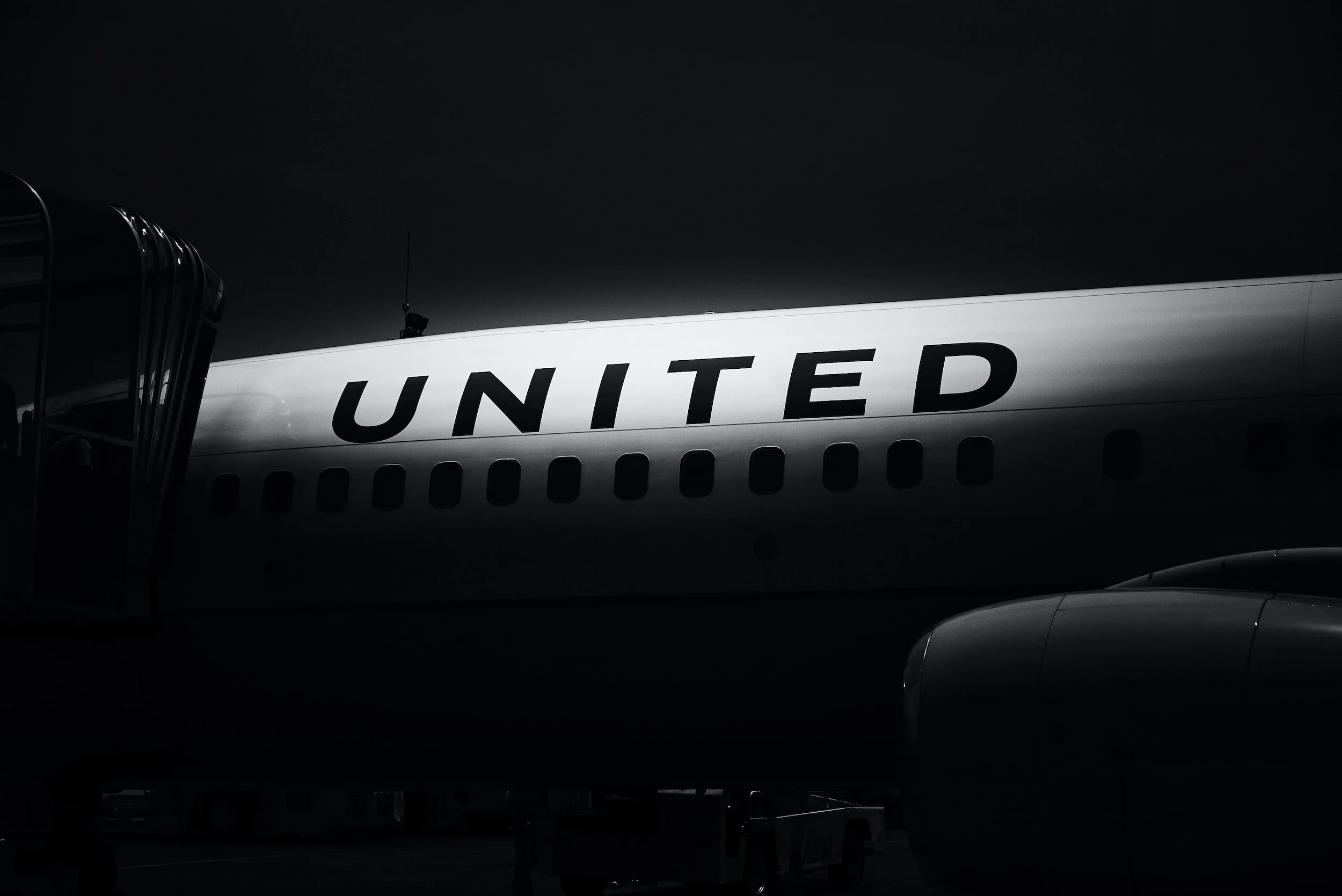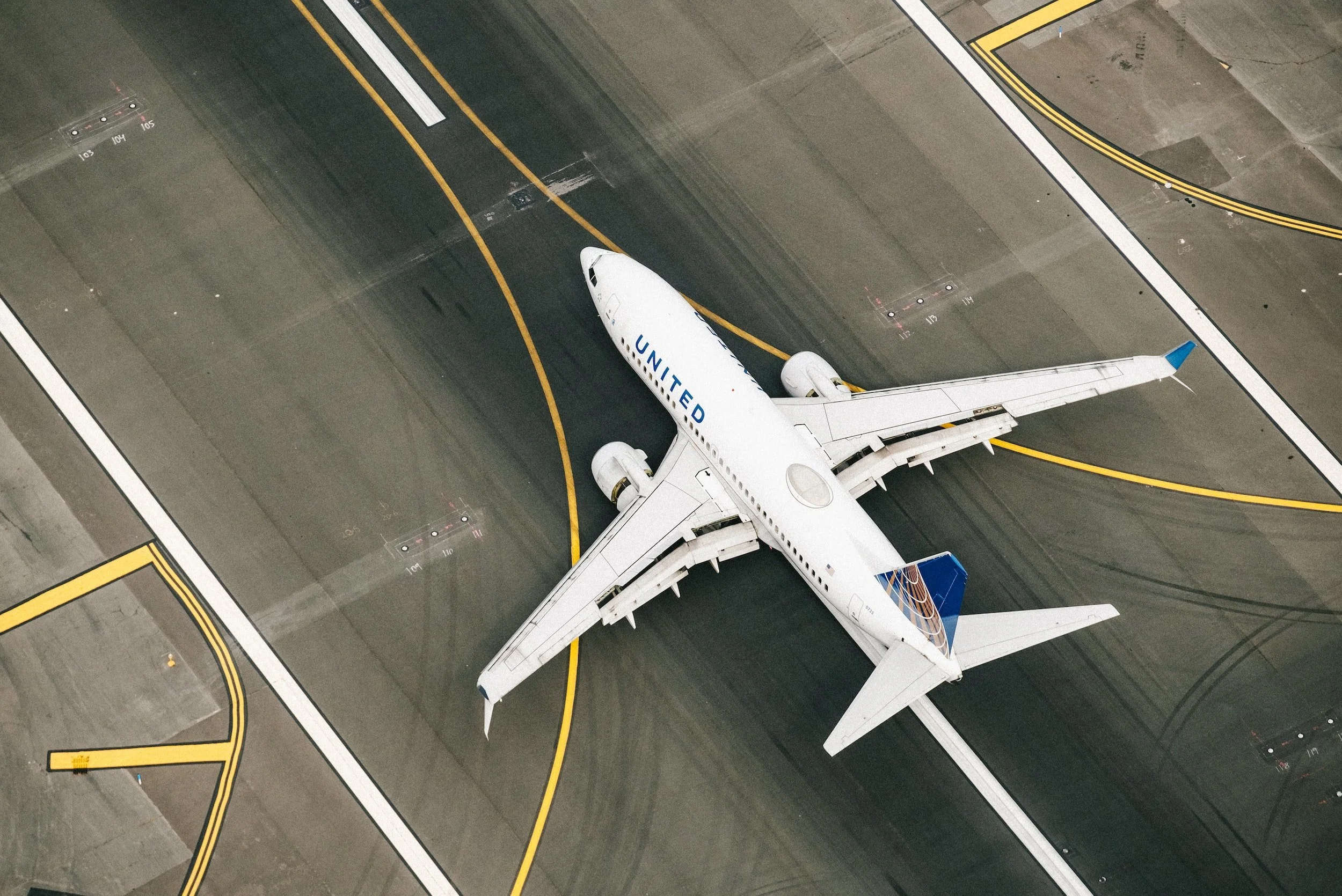
United Airlines
United Airlines, founded in 1926 and based in Chicago, is a major global carrier serving destinations worldwide. It's a founding member of the Star Alliance, focusing on innovation and customer service.
OVERVIEW
United Airlines operates a large domestic and international route network spanning cities large and small across the United States and all six inhabited continents.
The website lacks key features and functionality, such as searching for flights by price or viewing flight status updates. The interface has confusing navigation. The website is difficult finding the information users need.
Problem Statement
Project Goal
Redesign the entre homepage and organize the content to be intuitive to find and use.
My redesign focused on three critical areas: the homepage, sign-in, and topic search.
Declutter and reorganize the contents of the homepage
Decluttering and relocating the sign-in window
Add a dropdown window for topic search on the main menu tap.
Solution
Homepage Before & After
Login Screen Before & After
Search Topic Before &After
What have I learned from this project?
Creating a website that effectively meets the needs of users is essential for creating a positive user experience. To achieve this, I prioritize user needs and preferences when making design decisions. Consistency is also crucial to creating a seamless user experience. Furthermore, I have learned that conducting regular usability testing is important to identify any potential issues that users may encounter. This allows me to make informed decisions about how to improve the user experience and create a website that is easy to navigate and use.

Design Process
To make sure I prioritized users' needs, I used the Double Diamond design process. This method helped me approach the challenge in a systematic and user-centered manner, breaking down the key stages of the design thinking process. By following this framework, I could better identify areas where users were struggling, brainstorm innovative solutions, and create a design that effectively met their needs. Ultimately, this approach helped me create a product that was both effective and user-friendly.
Research
In the Discovery phase, I used different research methods to fully understand the problem. I did things like user surveys, competitive analysis, and qualitative research. These helped me learn about what was bothering users, what competitors were doing, and what design choices would be best. By gathering information from different places, I was able to get a better sense of what I needed to do to create a design that worked for our users.
Competitive analysis
To ensure that my redesign of the United Airlines website is effective and competitive, I thoroughly analyzed three major airline websites: Delta, American Airlines, and United Airlines.
Through this competitive analysis, I identified strengths and weaknesses in each airline's website design, user experience, and functionality. I compared each website's features, layouts, and overall design, paying particular attention to how each airline presented information about their flights and services.
User Survey
To gather quantitative data on the user experience of the United Airlines website, I created a survey with closed-ended questions that ask users to rate specific aspects on a numerical scale. This allows me to measure and compare responses easily. Using closed-ended questions with numerical scales allows me to quantify user responses and quickly analyze the data.
Completed by 27 individuals, primarily aged between 20 and 50 years old.
Q: What Primary features do you want to see on the airline’s homepage?
92%
Flight search
84%
Online check-in
60%
64%
Flight status
Manage your trips
Choose a dropdown topic search window from the main menu tap.
84%
User interviews granted me invaluable insights into the users' needs, preferences, expectations, and challenges. I conducted five user interviews during which I observed participants as they navigated the homepage, login screen, and topic search features. I encouraged them to verbalize their thoughts on the design. The following are the key takeaways from these interviews:
User interviews
Insight #1
The interviewees found the United Airlines homepage cluttered or visually overwhelming, with too many promotions competing for their attention.
Cluttered Layout
Insight #2
The website has difficulty locating specific features or information on the homepage due to a lack of clear signposting or an unintuitive menu structure.
Difficult Navigation
Insight #3
Some interviewees perceived the homepage’s design to be outdated or unappealing, negatively impacting their overall experince with the website.
Outdated Design
"I find the homepage cluttered and overwhelming. There are too many options and promotions, making it hard to focus on what I need."
— Interviewee#1
“Navigating the homepage is a bit confusing. I wish the menu was more intuitive, so I could easily find the information I'm looking for."
— Interviewee#2
Personas
Once my user interviews were completed, I created 2 persons. Jennifer represents a frequent business traveler, and Mark is a bugetconcious family traveler. These personas hone in on my users' desire to find flights, deals, and information. However, they were unable to, due to the difficulty of the navigation of websites.
Journey map
I developed a journey map to gain a deeper comprehension of user interactions with the homepage and identify areas for enhancement. Through this visualization of the customer journey, several opportunities for improvement were unveiled.

Problem Defination
The Define phase is where I laid the foundation for the project. By creating user stories and building out user flows, I can establish a clear direction and focus for the design work. This allows me to make informed design decisions that align with project goals and ensure that the end product effectively meets users' needs. The Define phase is where I moved from the abstract to the concrete and began to shape the vision of our project into a tangible reality.
User stories and user flows
After I completed research. I came up with 4 user stories and 2 user flows to shape my vision for the design.
Sketches & Wireframes
After the information architecture, I sketched the design that include these
The flight search is displayed first.
The following buttons contain relevant content based on my research.
The login popup box appears in the middle
The dropout topic search

Develop
To avoid potential roadblocks and ensure project success, I focused on prototyping and risk analysis early on. By creating a prototype, I was able to test and refine our ideas, catching any issues or user experience problems before moving on to the final design. This approach made it easier to adapt and make improvements as needed. Additionally, I developed clear design guidelines to help maintain consistency throughout the project.
Moodboard
The mood board for United Airlines primarily features a color palette of blue and white, exuding a sense of calmness, professionalism, and trust. Blue, a color often associated with stability and reliability, represents the airline's commitment to providing consistent, high-quality services. White, on the other hand, signifies purity and simplicity, reflecting the brand's dedication to delivering a seamless and hassle-free travel experience.
Style Guides
I've updated many design parts while keeping it simple and engaging. The Open Sans font remains the same, but the CTA button's color changed from purple to blue. Additionally, the footer background is now navy, which nicely complements the website.
Accessibility
I designed the website following the latest WCAG guidelines for a better experience. This means using clear text, easy navigation, and good color contrast for accessibility.
Prototype
I've updated many design parts while keeping it simple and engaging. The Open Sans font remains the same, but the CTA button's color changed from purple to blue. Additionally, the footer background is now navy, which nicely complements the website.
Homepage wireframes & prototype
Login screen wireframes & prototype
Topic search drop-down window wireframes & prototype

Outcome
The Deliver phase is a key step in the design process that helps me reduce risks. By using prototyping, testing, and validation, I can check if the design solves the problem and meets users' needs. This important stage helps me make sure the final result is effective and successful.
I utilized Maze.co as the platform for conducting my usability tests. I established three distinct pathways for the testers to evaluate their ability to swiftly navigate and arrive at the desired outcomes.
Usability tests
The results revealed that testers were able to quickly complete and navigate through the first two pathways. However, the final pathway presented challenges, with many indirect clicks from users. Upon examining the heatmap, I discovered that users clicked on the "Manage Your Trip" option instead of the "Log In" button located at the top right corner of the page. Consequently, I modified my prototype by adding a "Manage your trip" button that directed users to the log-in screen, thereby improving the overall user experience.



















